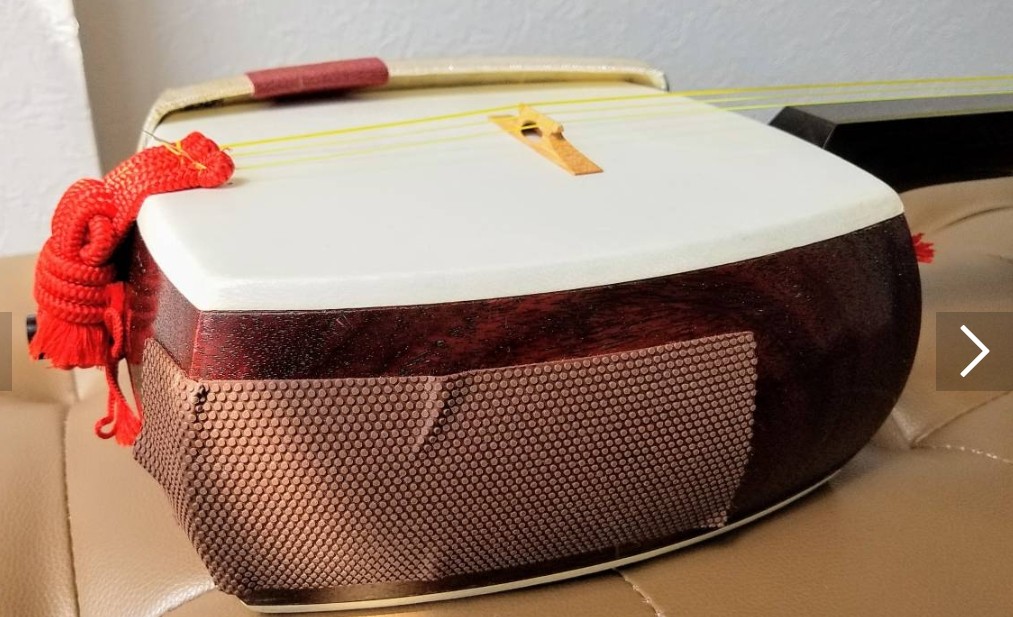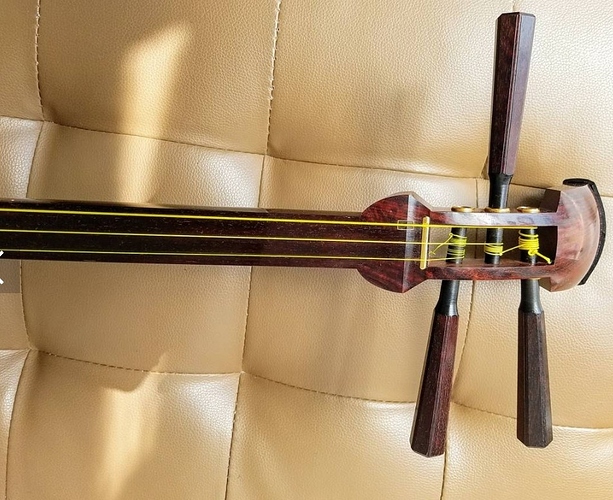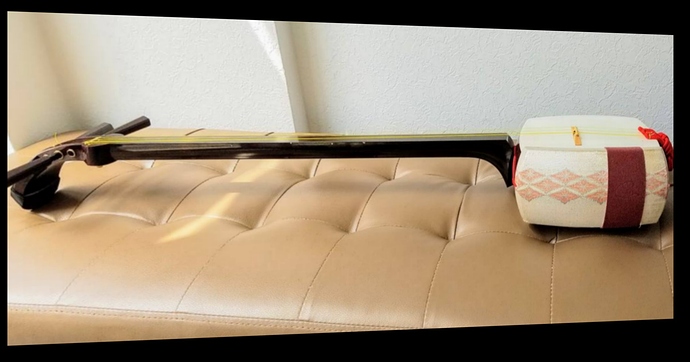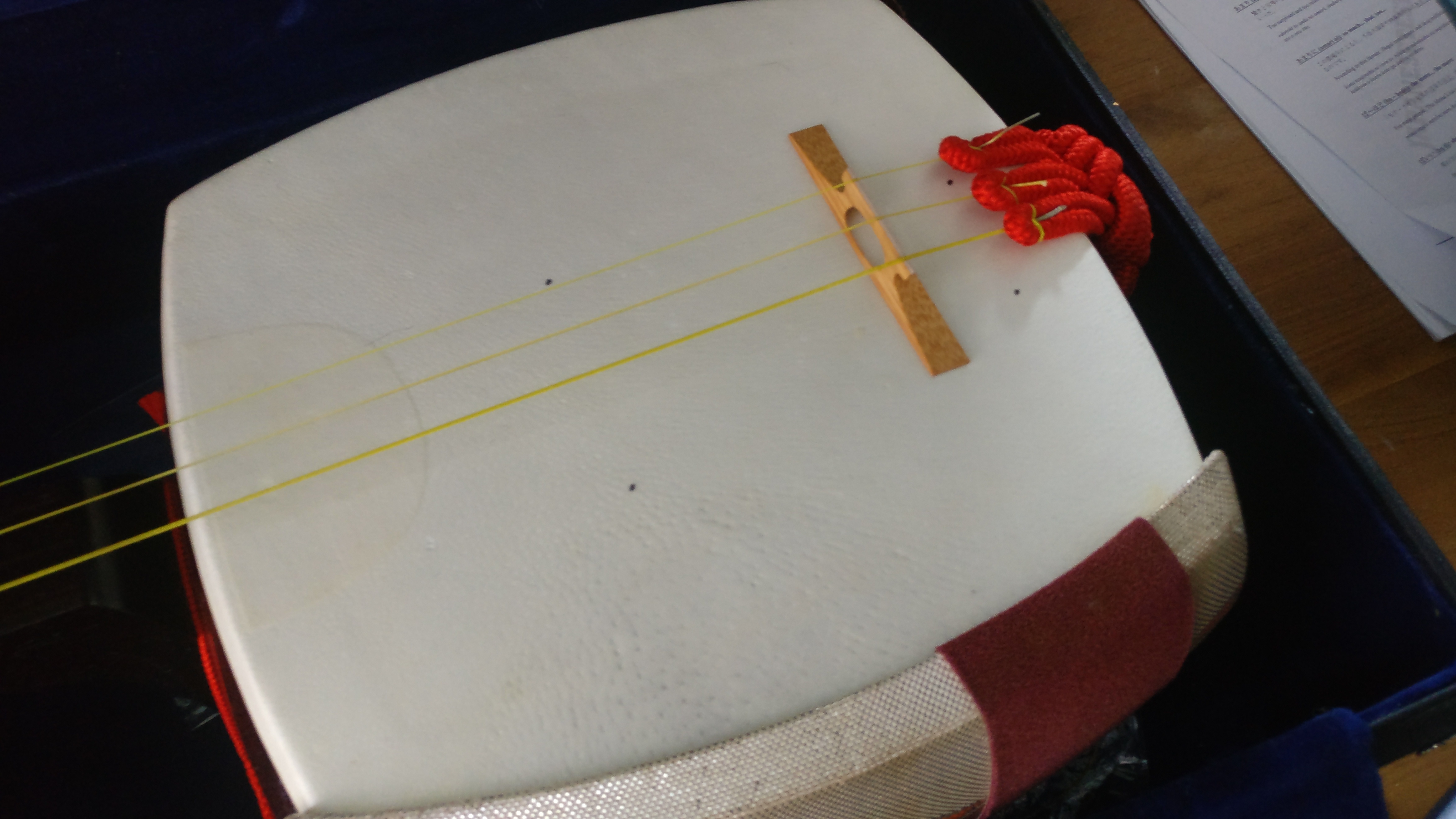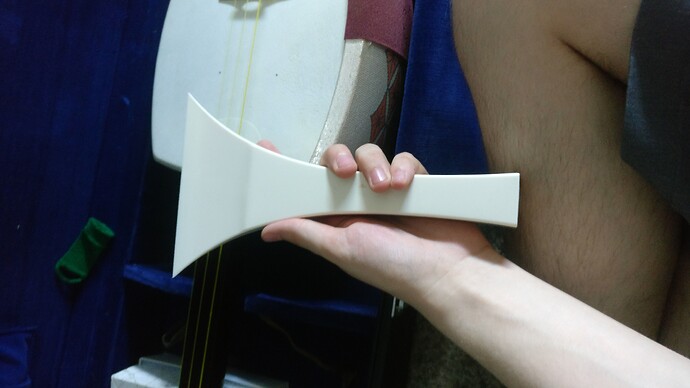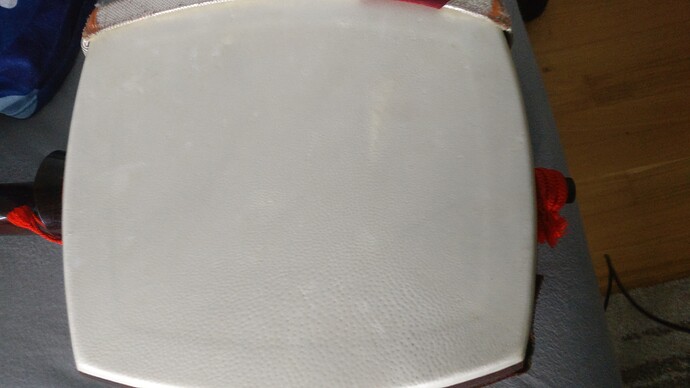
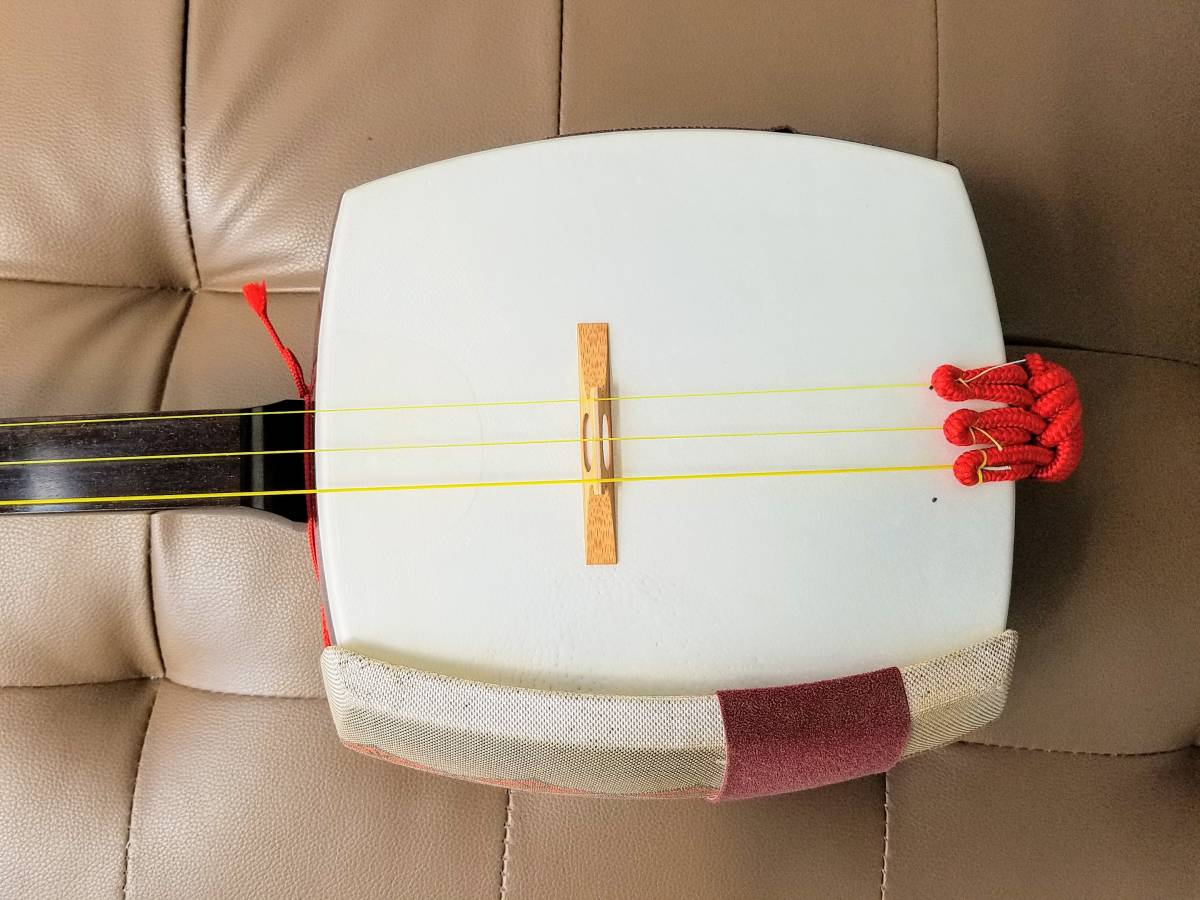
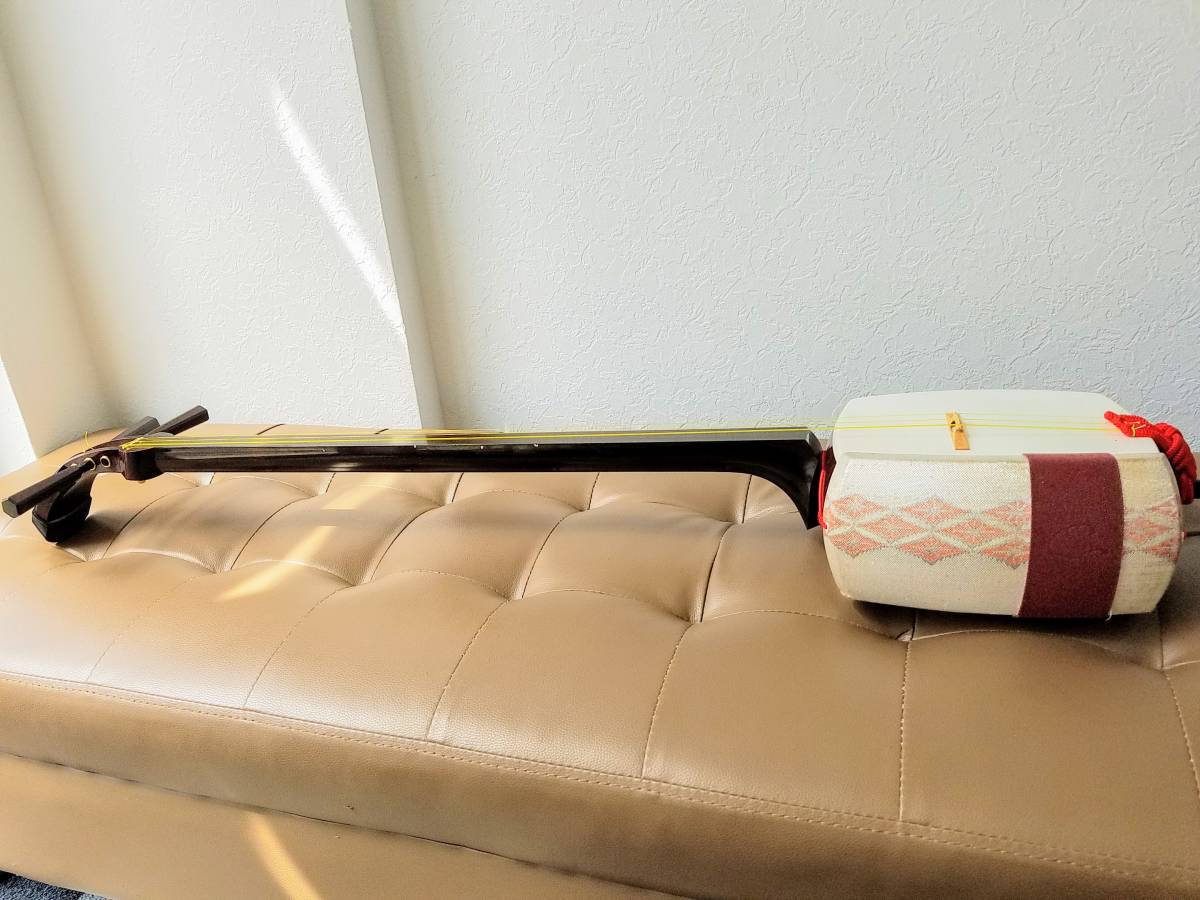
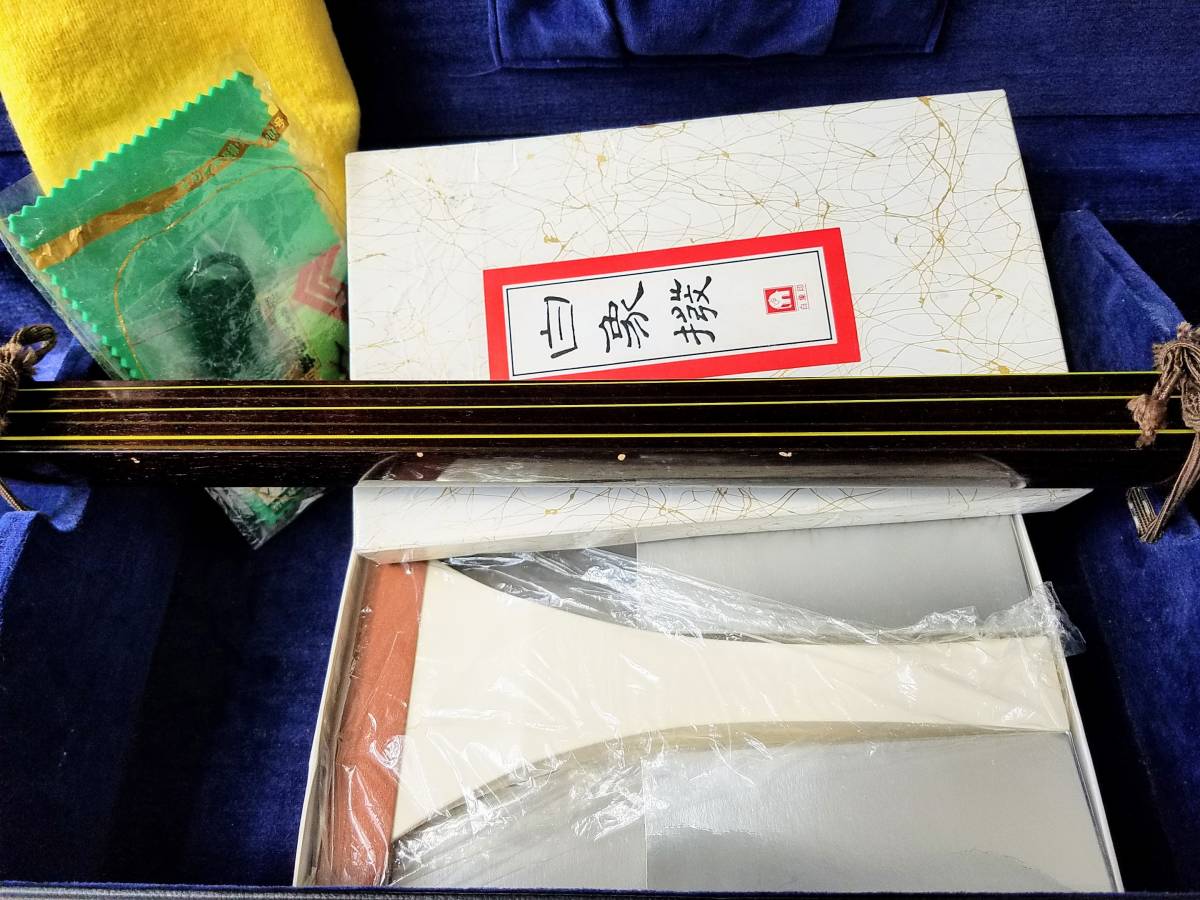
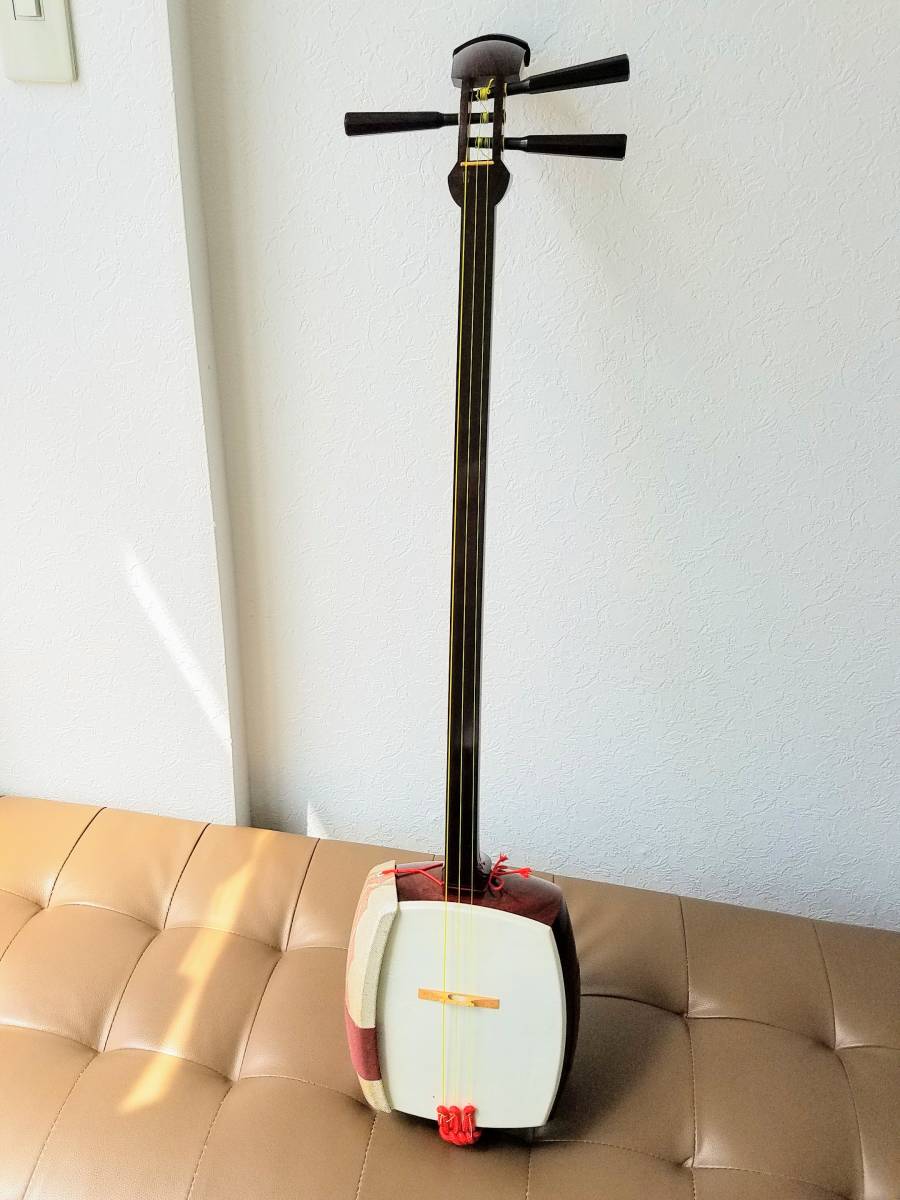
Gut says 200 - 750 freedom bucks, depending on a number of factors that aren’t apparent from this pictures.
Is the tenjin damaged?
Does the sawari work?
Is the neck damaged or in need of refinishing?
Is there tochi?
Kinhoso?
Ayasugibori?
Are there dead zones?
How old is the skin?
What is the skin made from?
Is it actually Kouki, or a really dark stain on Karin?
Mitsuori or Nobezao?
Neck and body dimensions?
Loose itomaki?
Clarification: valuation based on Japanese secondary market, not accounting for U.S. scarcity.
Hello, thanks for your reply!
To my knowledge, the sawari works and it’s a nobezao. The tenjin doesn’t seem to be damaged either. Dimensions wise, it’s most likely about 93-100cm long, but I’m not sure. The itomaki seem fine too. The only damage I spotted were these little chips on the side of the sao, but they aren’t too noticeable I suppose.
Here are some more pictures:
On another note, does anyone have experience with Shirozou bachi? Are they any good?
Concerning dimensions: 93-100 cm is a wide range, my dude. It’s also not especially useful due to the following:
The dimensions that matter are the size of the body and the width (and length of the sao). These indicate the shamisen’s subtype and this establish some degree of pricing.
Some instruments are less common (Yanagawa) or in higher demand (Tsugaru, which this definitely isn’t) or may be especially desirable (I’ll pay more for a min’yo than a Jiuta, though the latter may actually cost more in a shop).
With more pinpoint length data we could figure out that information through the power of Photoshop.
Anyway:
Nobezao reduces the price and also means it’s not a kinhoso. It also implies the wood may be of lower quality, (which further suggests other things) but that’s not an assured fact. It’s strange for a kouki shamisen to be Nobezao, but it’s not unheard of.
The itomaki are joined. You can see that the ebony bases meet with a different wood at the grip. The itomaki are also carved, this usually costs more but the secondary market doesn’t care for the most part.
If the tenjin beneath the cap is whole, then that’s good.
Chipping on the side of the neck can be very noticeable when playing.
Thanks for your reply! Don’t know any more about dimensions etc at the moment, but I’ll update the thread when it arrives in a few weeks. Was able to get it for 17000 Yen, felt like a really good deal.
No matter the specifics, that’s a good deal. Even an old style, tinny artificial skinning would usually cost more.
So we’ll done!
Unless the skin is broken.
Then :V whelp :V
Just another question: what’s the difference between minyo and jiuta shamisen? From what I understand they’re both chuuzao shamisen, which this one is (to my understanding).
The descriptions of shamisen sub types on bachido leave a little to be desired, yeah. Neck size doesn’t really describe sonic genre differences.
The primary difference between the two is the size of the body. Min’yo shamisen use a go-rin-da(the same as hauta and Kouta), while Jiuta use, typically, ichi-bu-go-rin-dai.
As it was described to me, and I more or less agree with (from a comparation stand point): min’yo are more guitar, Jiuta are more bass guitar. The latter has more low end, which colors it’s higher registers and changes the character of its sawari.
There’s deeper differences than that, but it might give you a sense of things.
The latter is larger, which alters the sound.
Hi everybody. From the first picture, It looks like it could be a tanzao… But it can be the angle of the camera… No problem anyway (I have one), but the shorter sao could change the practice for the fingers… Good deal anyway.
Hello! Since the seller hasn’t specified any measurements, I’m not sure either…
I tinkered with the perspective of one picture a bit so it looked more head on like this:
Assuming the dou is about 20cm long irl and 1.4cm long on my screen, the whole shamisen was 6.5cm long on my screen. So I divided by 6.5 by 1.4 and multiplied that with 20, and the result was about 92cm. Not sure if my math is right at all or the perspective in the picture head on enough to properly calculate the length of the shamisen, but hey, I tried lol
Nothing I can do but wait till it arrives I suppose, I’ll keep this thread updated!
Thanks to everyone for their kind responses!
I got one more question: why are mitsuori shamisen “better”/ more expensive than nobezao shamisen? Is it just because of the kouki or does it make any difference sound/performance wise?
If it clocks in at 92, that’s a tanzao.
Tanzao shamisen are relatively common in Western Japan and are built to accommodate higher voices. The scale is a little bit shorter, but for the majority of positions (up to 10 or so) there isn’t too much difference.
Traditionally, a mitsuori sao (requiring higher levels of craftsmanship) tends to get the better wood than a Nobezao. If you’re already sinking time and money into the product, you may as well go whole-hog on bells and whistles.
But that’s not to say high quality nobezao shamisen don’t exist. It’s just that off the rack high quality stuff tends towards certain bundled characteristics.
Thanks for the reply. Do you happen to know where I would have to place position markers on a tanzao shamisen/ any shamisen for that matter? In the crash course, Kyle only shows positions 3 and 4 so I’d like to know
There are already markers on the sao, my dude. Look at the pictures
Oh, I thought those were little chips/damage in the Sao, sorry
Update: It’s mitsuori, probably kouki and about 100cm long!
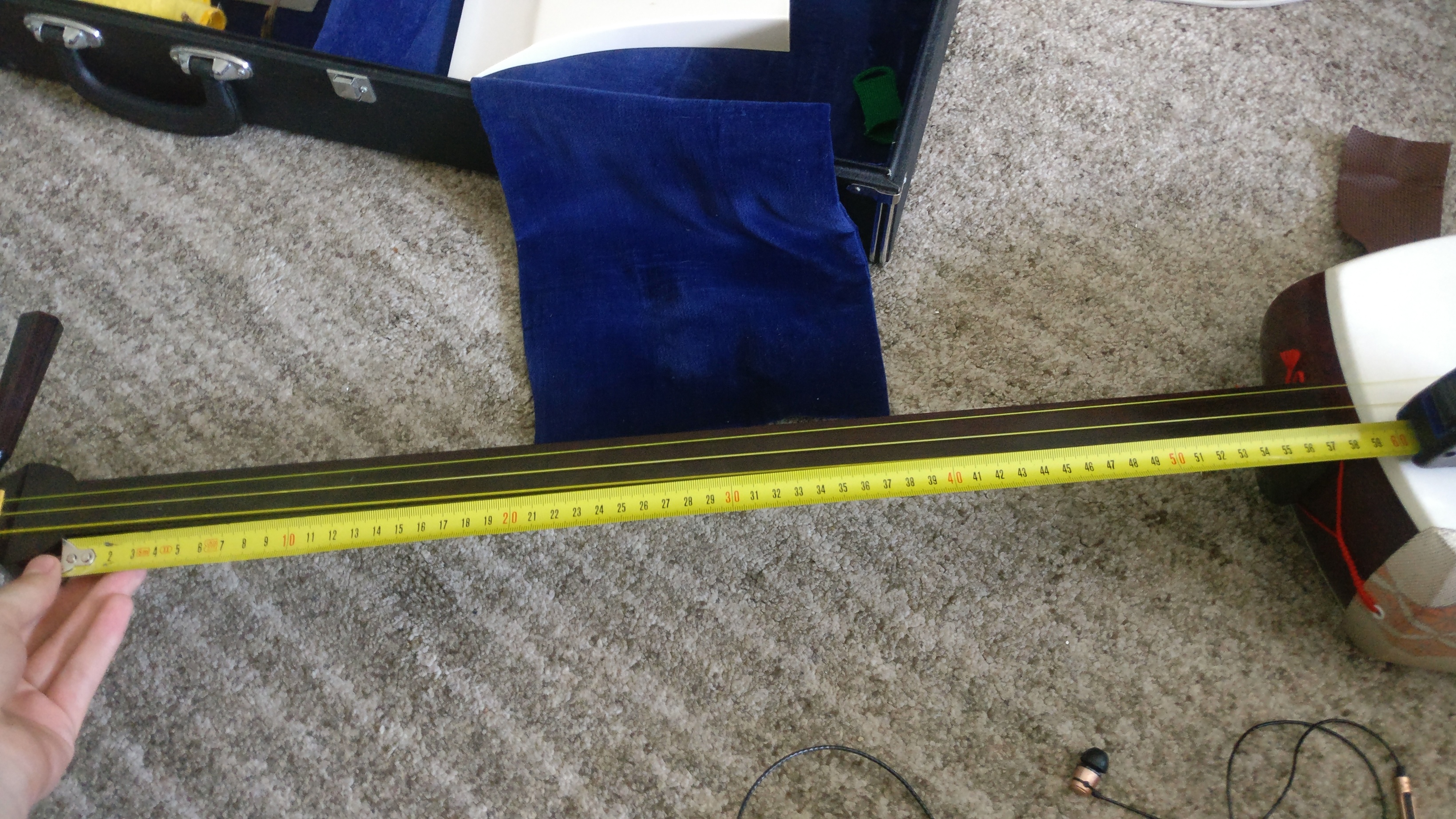
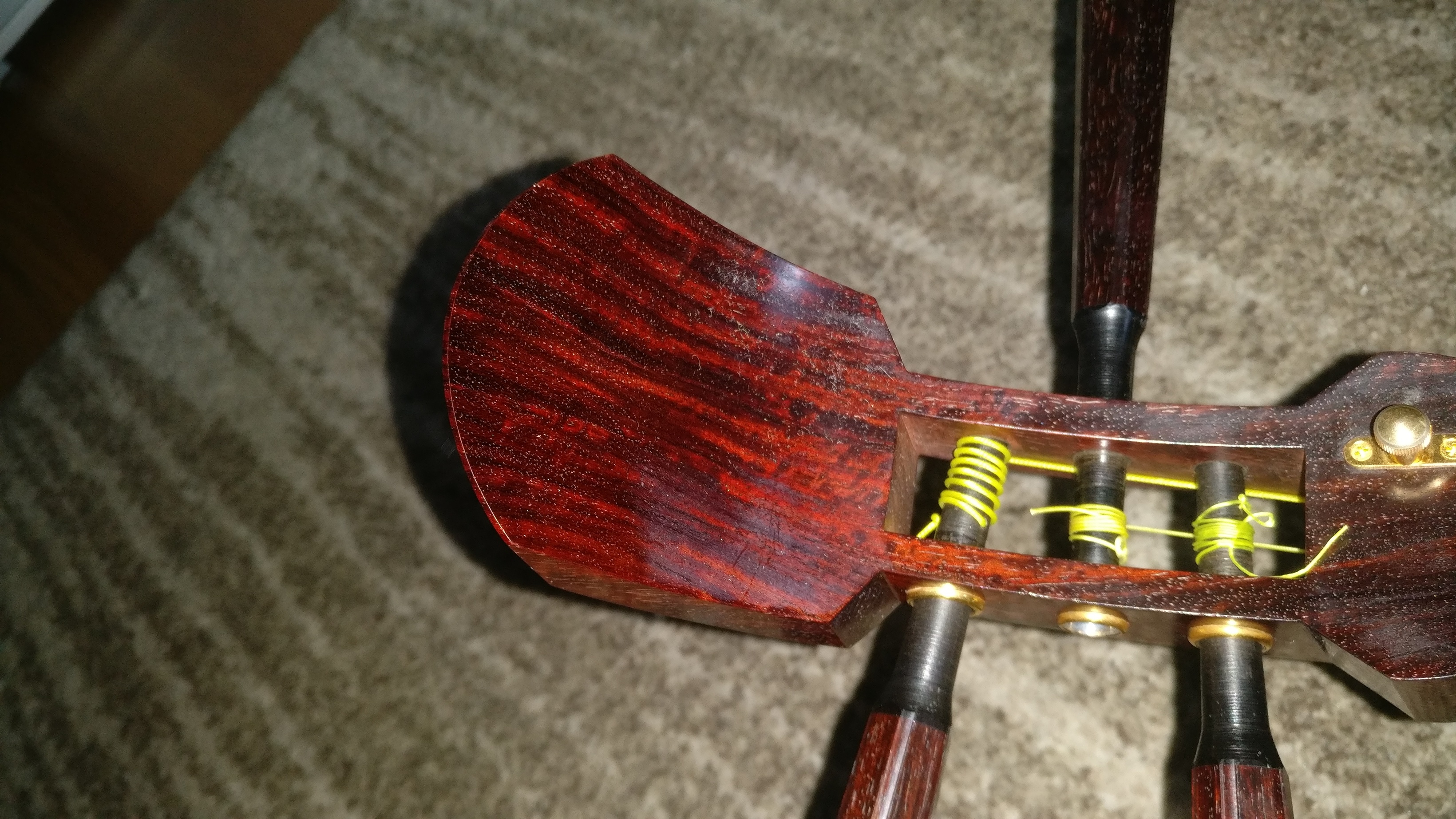
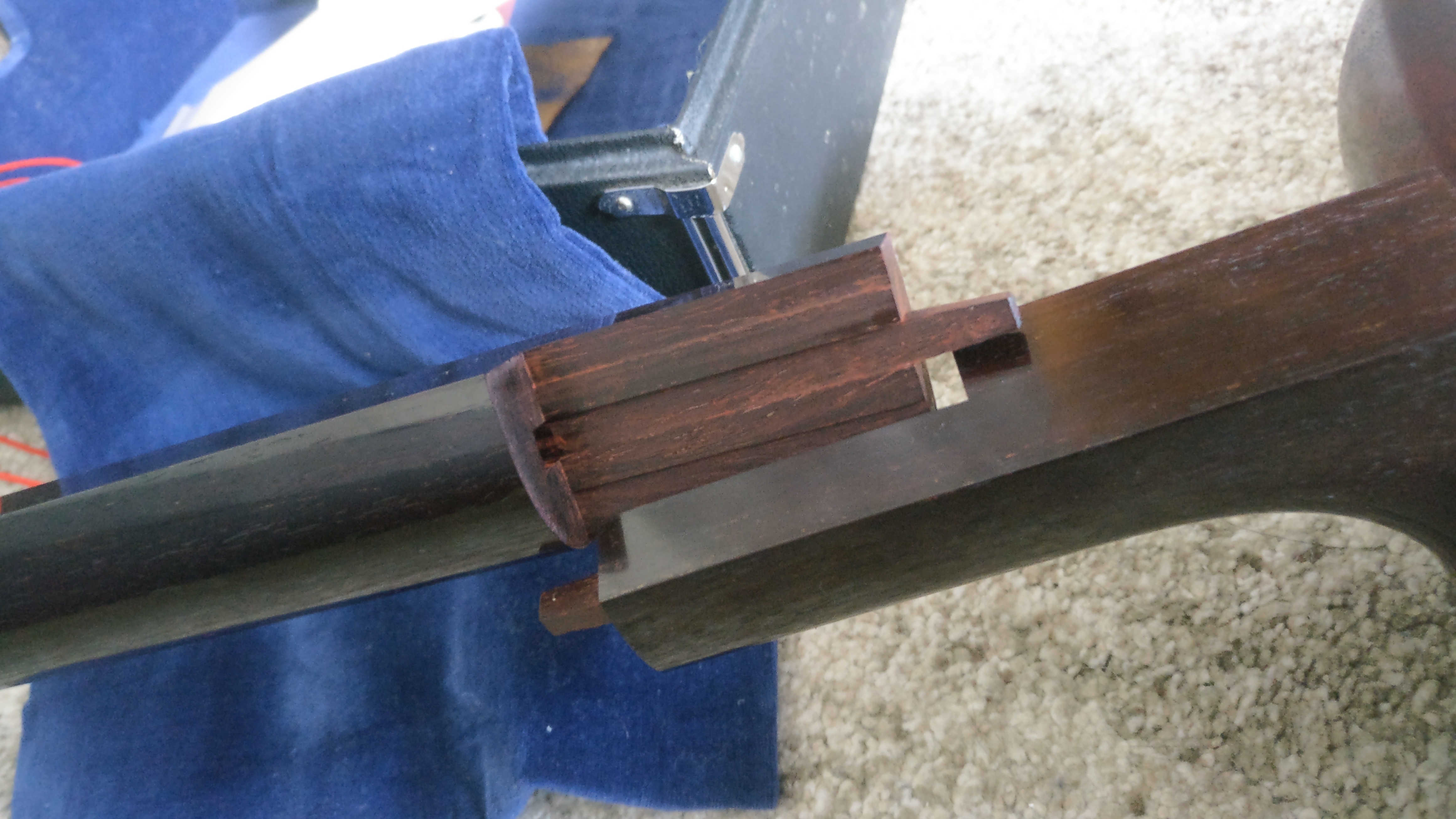
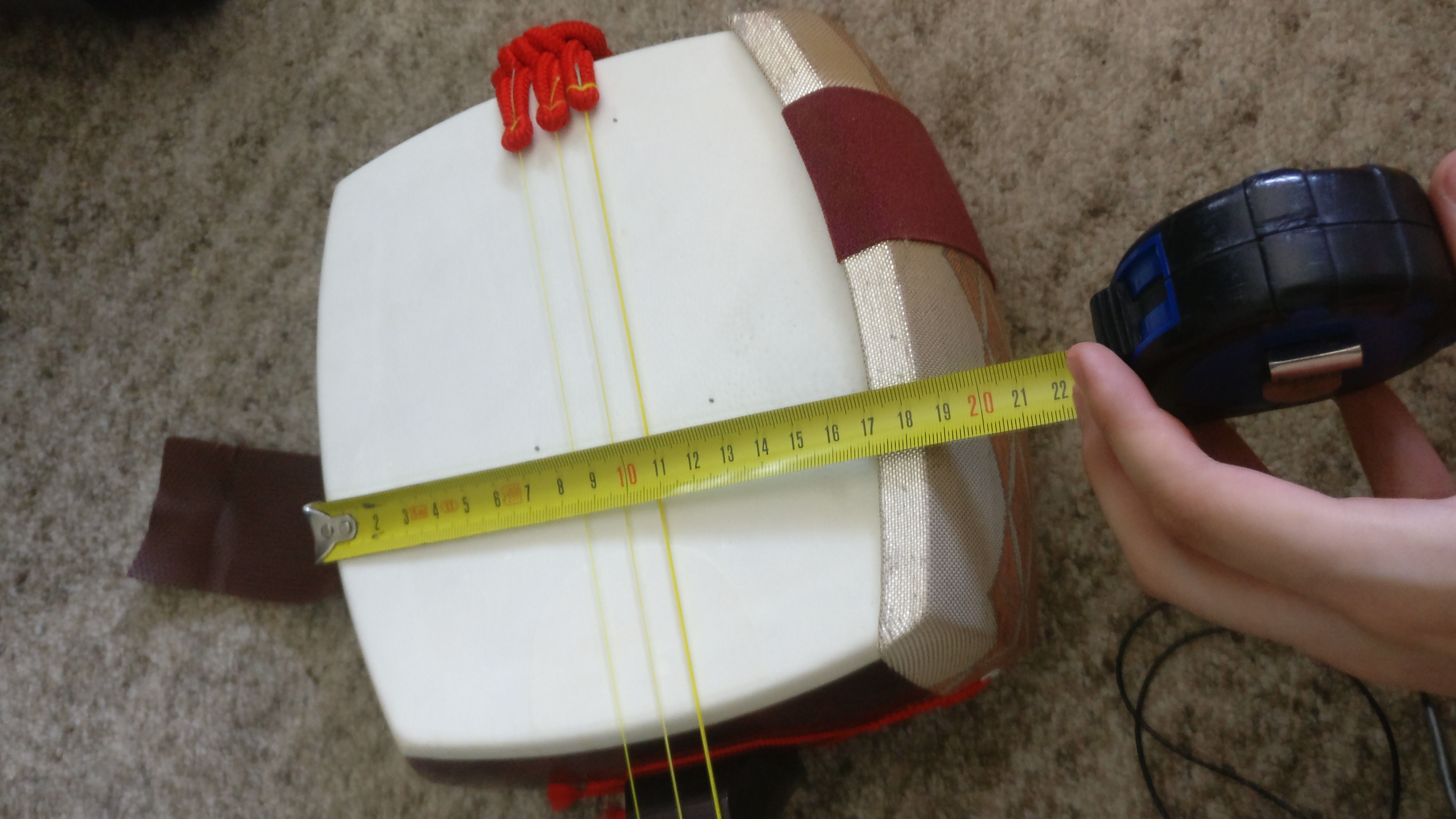
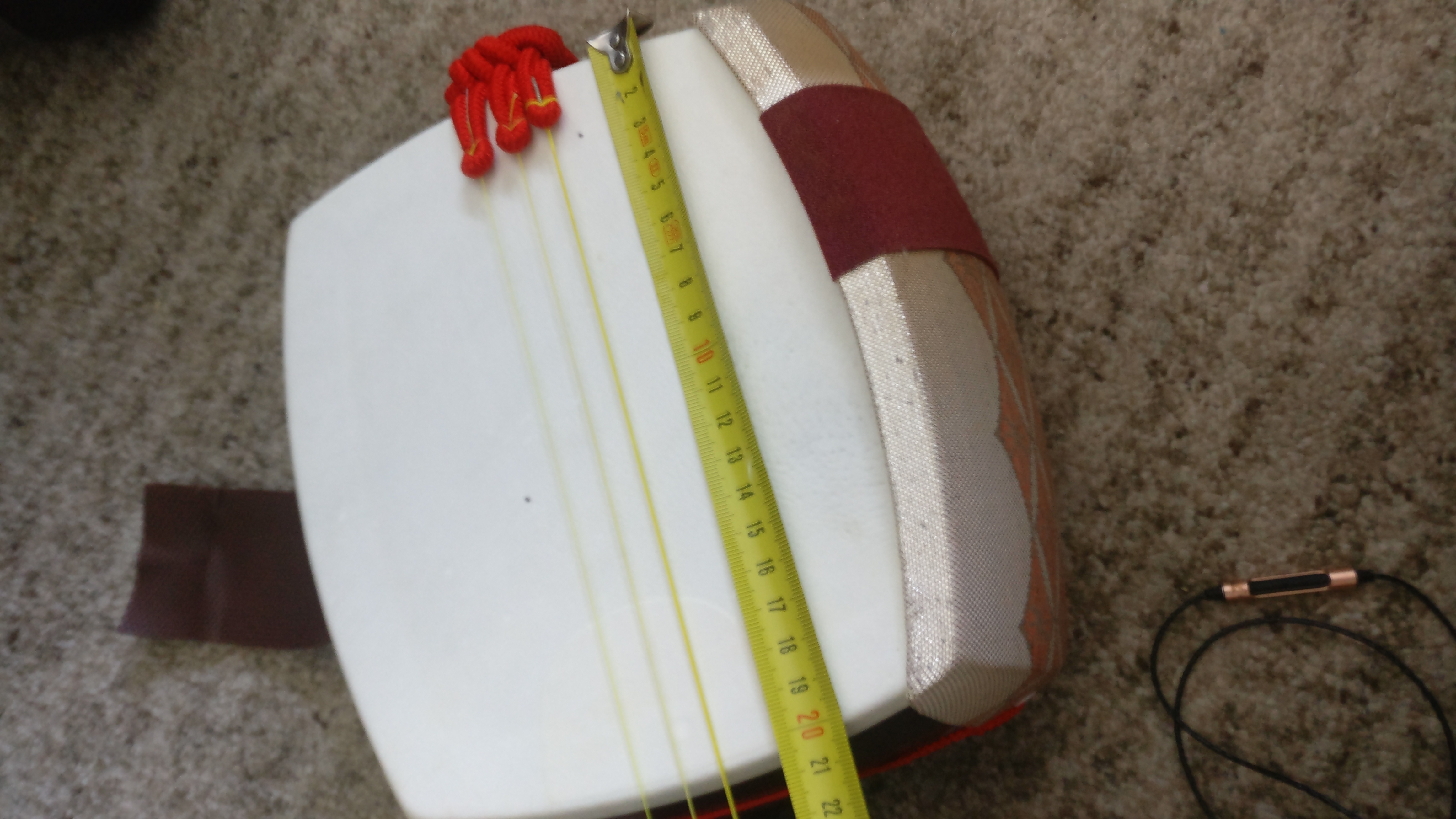
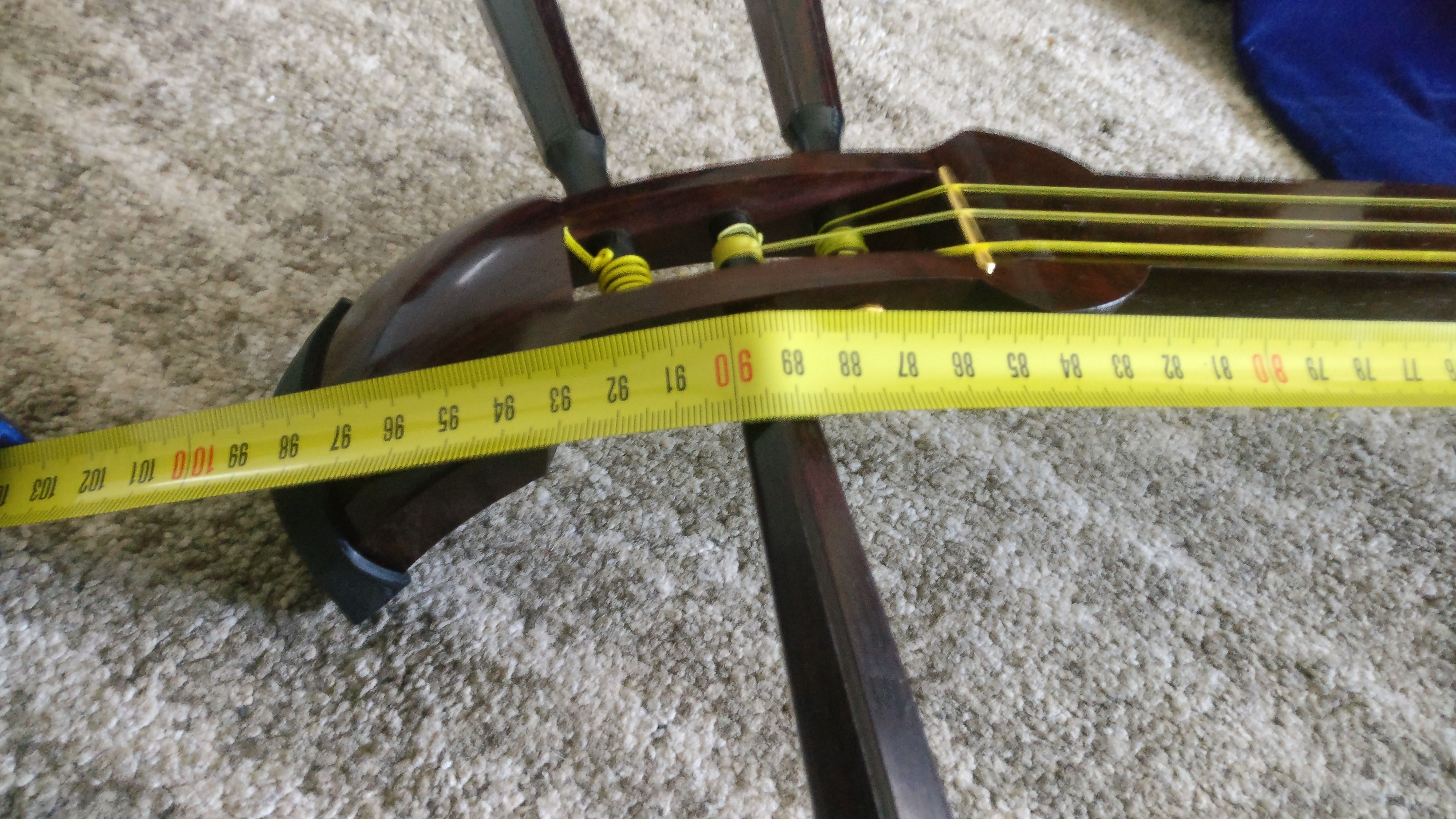
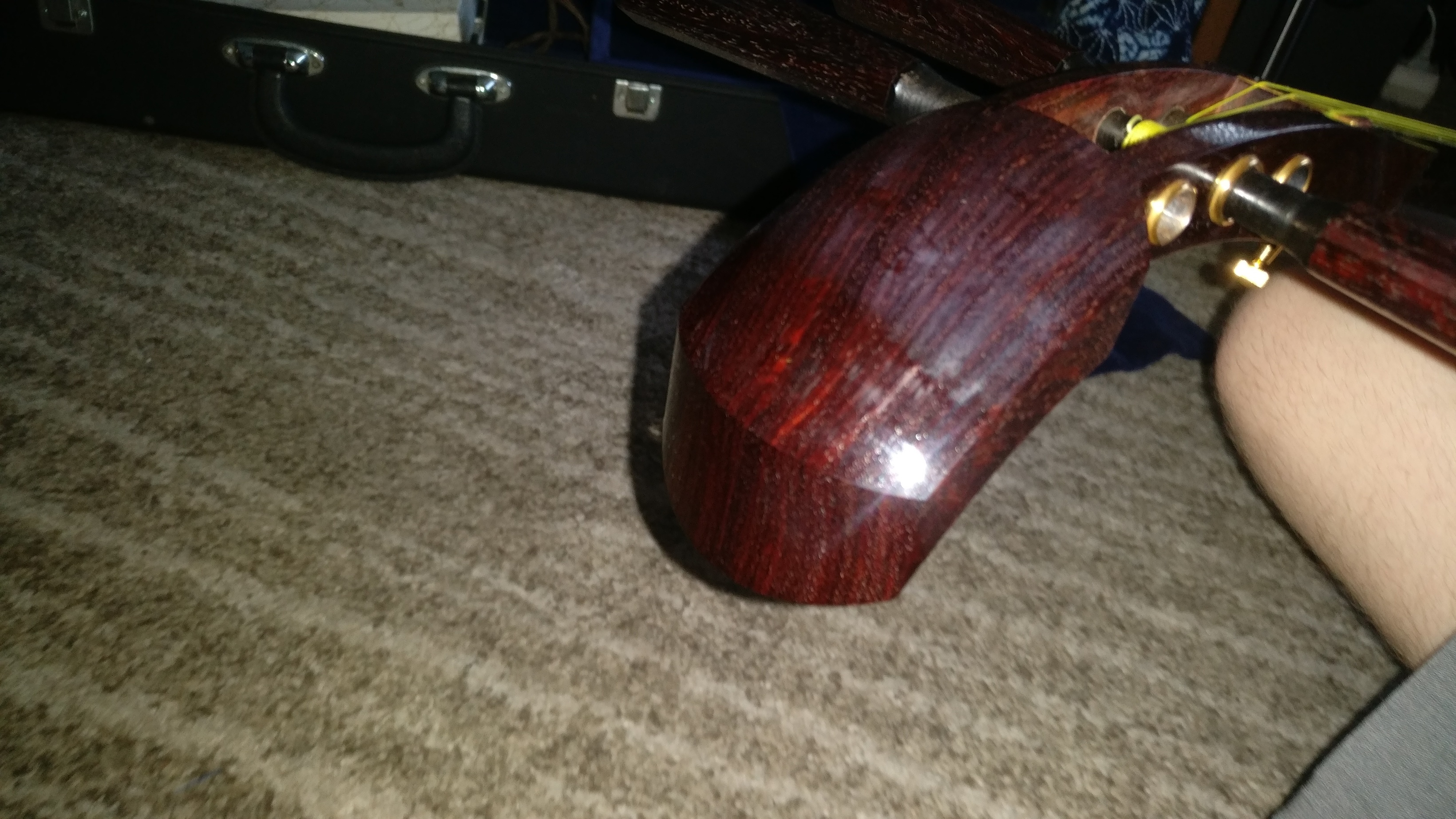
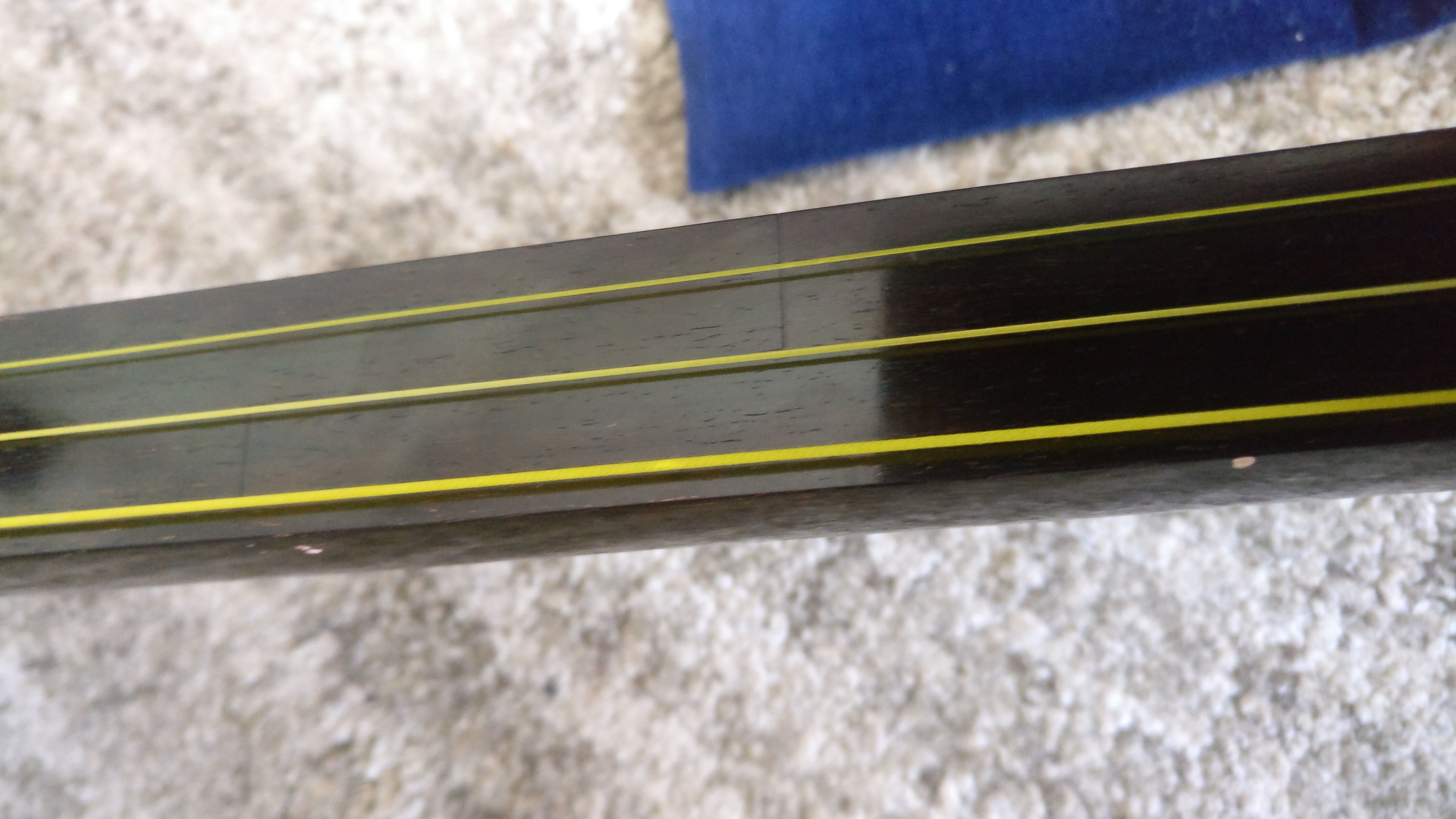
So, it looks like a nice min’yo shamisen ! If it’s kouki, I would say about 180000 yen (depends on other factors like the skinning or ayasugi bori, etc…). I may be wrong, so let the sensei here give us their opinion !
Looks like I got a really good deal then, especially considering a hard case, doukake, yubikake, extra strings and a jiuta bachi were thrown in extra too 
I tried separating the dou from the sao to check for ayasugibori, but it wouldn’t budge and I don’t wanna risk breaking it so I’ll just let it be I suppose. Really happy with it overall, the big jiuta bachi that came with it is just sort of difficult to use lol
I’ll attach some more pictures of the skin and one of the bachi:
Inugawa skinning (how old? Still tight?), bamboo topped with Shari koma, kouki mitsuori sao. No chipping on tenjin. No visible cracks, but definitely wear from the strings. Not particularly visible tochi.
Asuma sawari
Kokutan and kouki itomaki.
Not kinhoso. Bachi is plastic.
Is the interior of the dou smooth or does it have ayasugibori?
How big is the bachi (length wise?)
Patrick’s appraisal is close to a store’s sale price, but the secondary (auction) market would place it much lower due to a glut of stock.
Hi, just checked and there’s ayasugibori! 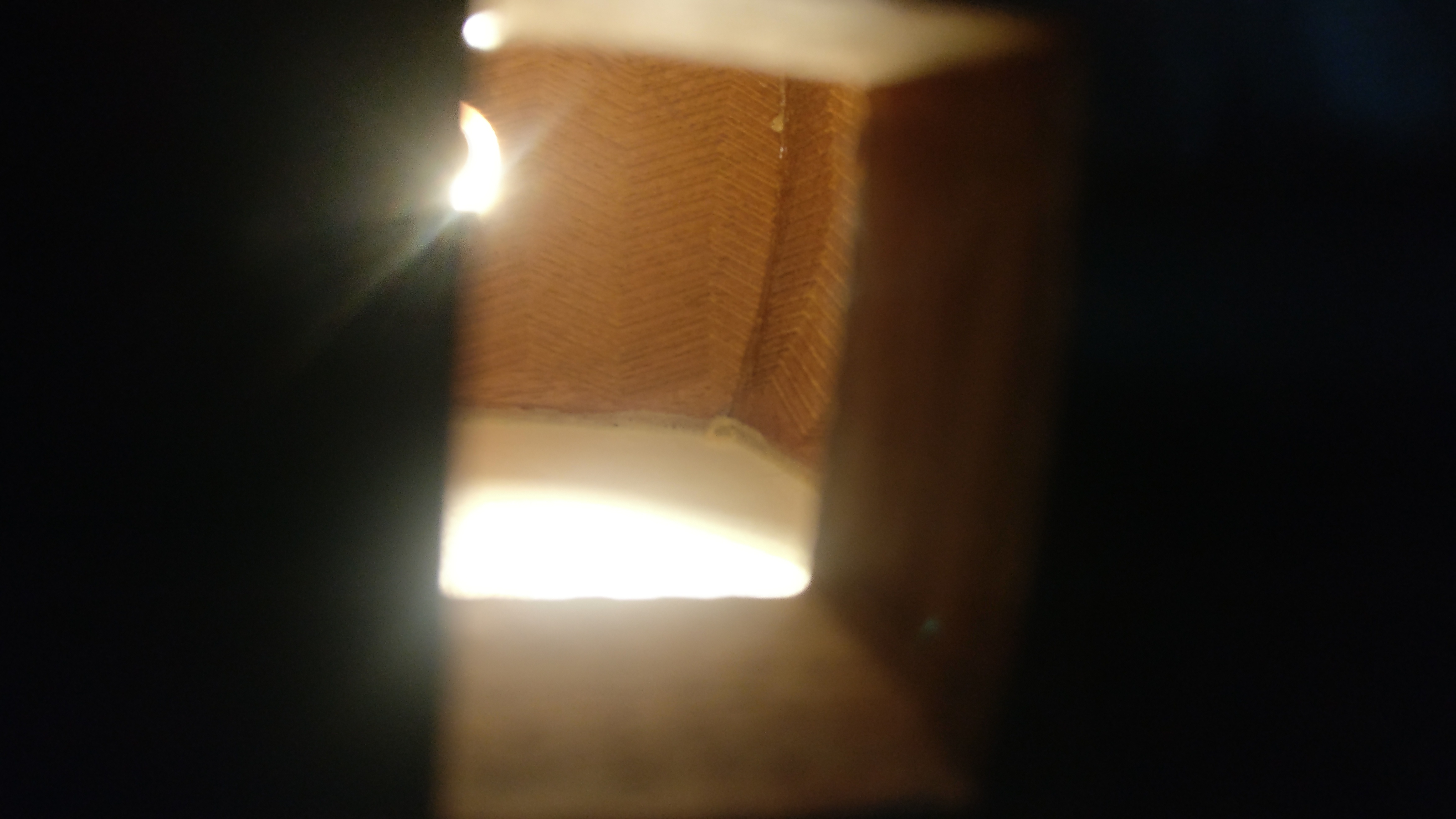
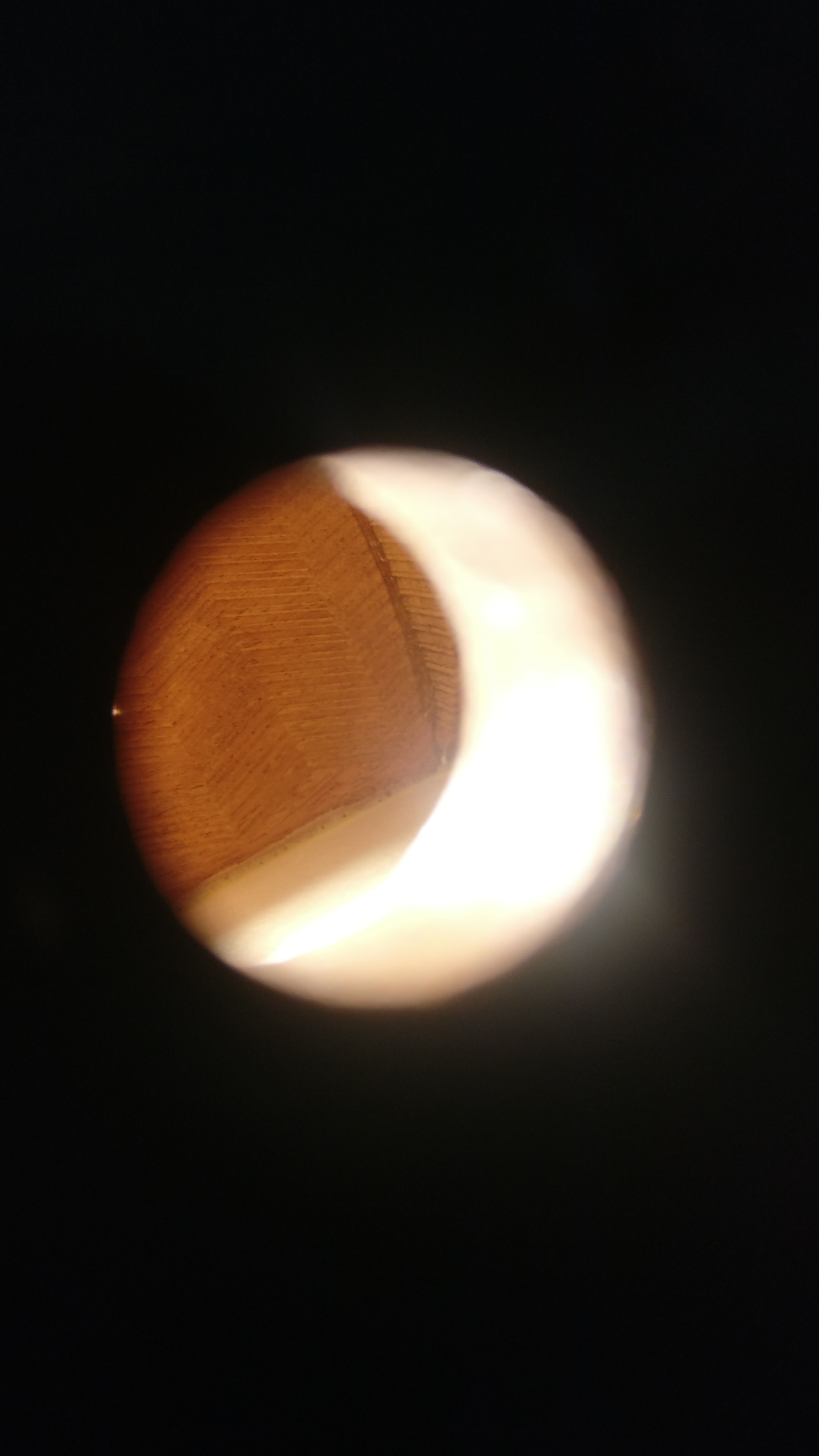
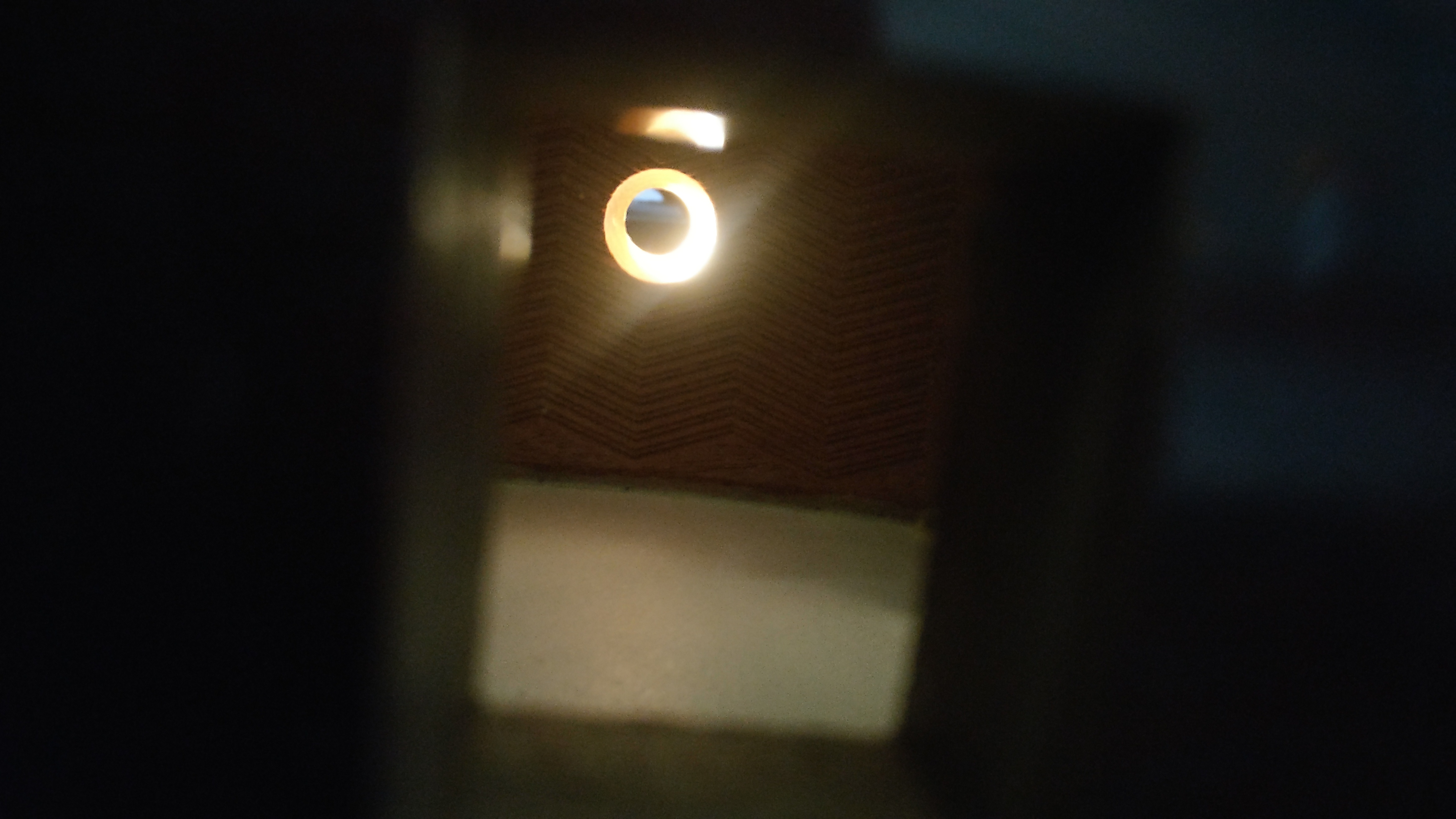
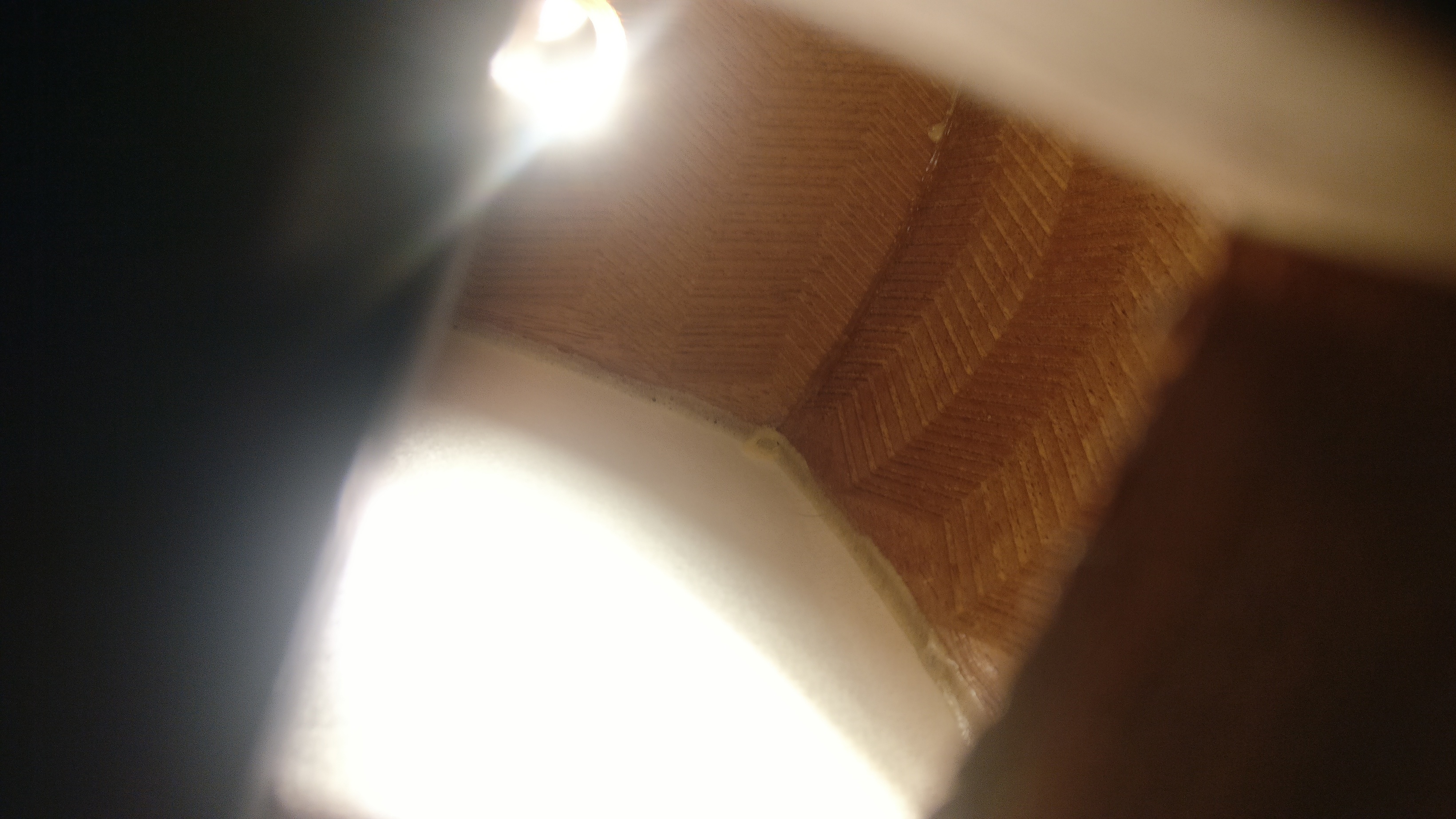
The bachi is 23cm long and 13cm wide.
The skin is also tight and sounds good to me, here are videos:


